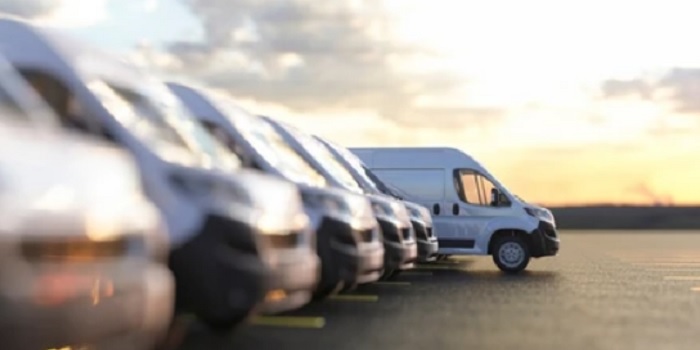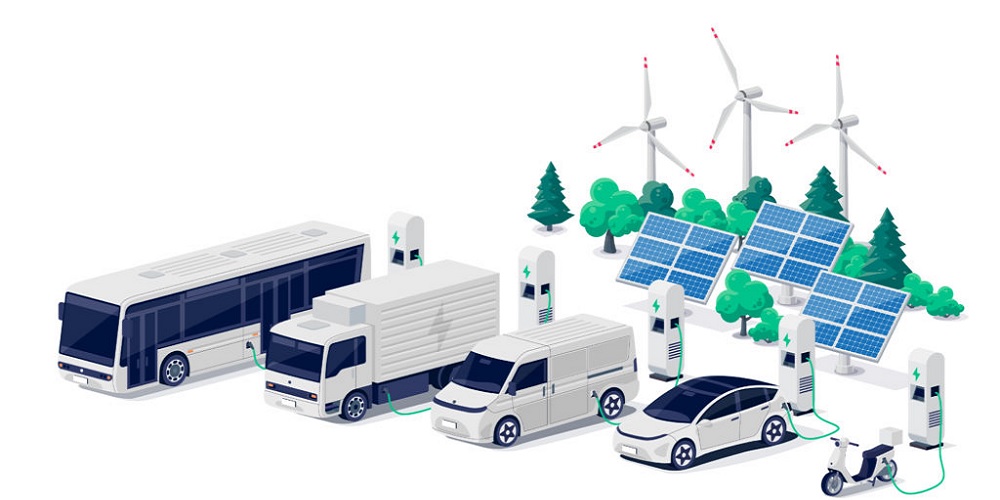Fleet sustainability: Reducing emissions with fleet management solutions

Not including public transit, there are nearly 5 million vehicles in federal, state, county, and municipal fleets. That represents a significant contribution to greenhouse gas emissions, especially considering that transportation makes up 28% of emissions in the U.S.—more than any other sector.
Shifting to EVs and striving to reach net-zero emission goals will take a monumental effort. Fleet management solutions that improve efficiency and meet emissions targets are essential for public fleets to achieve sustainability and targets for reducing their carbon footprint.
The growing importance of fleet sustainability
Despite the public attention that they have received and the urgent calls for action among federal government agencies, EVs in the federal fleet still make up just about 1% of vehicles. Infrastructure is also lagging. Plans called for adding 9,500 light-duty EVs and 8,500 charging ports in 2023, but a GAO report shows that efforts fell well short.
In fact, many federal government agencies still do not have approved plans despite their mandate to create them. Efforts at the state and local level are mixed. Some government fleet managers have made significant progress toward hitting net zero goals, while others are still in the early planning stages.
With aggressive goals to transition fleets in the next few years, time is running out quickly. Charging infrastructure alone can take twelve to eighteen months to build out once site selection has been completed. Grid updates can take even longer.
To reach a goal of 100% zero-emission vehicles (ZEVs) by 2027, more than 3 million must be purchased. Currently, manufacturers make about 1 million a year. Waiting can cause a significant bottleneck in meeting fleet sustainability goals. Fleet and procurement managers who wait until mandates draw near may simply be unable to secure the vehicles that they need to meet their targets.
Improving fleet efficiency and reducing emissions
So, how can fleet managers improve sustainability and reduce emissions? If planning hasn’t already begun, it’s past due. Here are the crucial steps to build your plan.
Vehicle right-sizing and optimization
Conducting a full analysis of vehicle usage and right-sizing vehicles can optimize fleets. Smaller, more fuel-efficient vehicles can be used for many tasks rather than defaulting to large SUVs or trucks. Fleet managers should inventory by use case and assign the right vehicle for each task while planning for phased replacement.
Electrification and alternative fuels
Transitioning to battery electric or plug-in hybrid vehicles dramatically reduces emissions. Many light-duty vehicles in fleets can be electrified now. Alternative fuels like renewable diesel or hydrogen may work for larger vehicles. Installing charging and fueling infrastructure is critical.
Telematics and analytics
Fleet telematics and data analytics tools can optimize routing and maintenance to improve MPG and reduce emissions. The software can track vehicle usage, identify inefficient outings, reduce idling, and predict optimal maintenance cycles.
Replacement cycles
Upgrading older vehicles to newer, more efficient models can significantly cut fuel use and emissions. Analyzing optimal lifecycle replacement strategies through a total cost of ownership lens is crucial.
Training
Driver training to reduce idling and follow efficient practices can improve MPG. Maintenance staff training is also vital for properly supporting alt-fuel vehicles and infrastructure.
Reaching net-zero emissions
Reaching net zero for emissions is a lofty goal. It will take discipline and financial commitment to make it happen. Fleet managers and government leaders need to do the following.
Continue transitioning vehicles
Ongoing transition to ZEVs is essential. It requires long-term planning and procurement changes to ensure necessary volumes. Supporting policies and funding streams can enable smooth rollouts. Many locations have had to deal with significant zoning and funding issues to build a sustainable fleet. Intervention to eliminate red tape and streamline processes may be required.
Expand infrastructure
As ZEV volumes grow, charging and fueling infrastructure must keep pace. Planning for this growth through public-private partnerships is essential so infrastructure is ready when vehicles are deployed. You should be working directly with local utilities now so they can ensure a robust delivery method to support your electricity usage.
Optimize through data
Ongoing fleet data analytics will drive further efficiency as vehicles transition. Telematics helps monitor reductions in emissions as EV replacements are added to the fleet.
Stay focused
Reaching sustainability goals requires a concerted long-term focus from leadership down through procurement teams to overcome challenges and meet goals.
Sourcewell solutions for fleet sustainability
Sourcewell offers cooperative purchasing agreements that enable fleet managers and procurement teams to leverage the bulk buying power of more than 50,000 government agencies and educational institutions. It has hundreds of ready-to-use, competitively solicited contracts, including EVs, telematics, software, accessories, consulting, and everything that you need to fulfill your sustainability and net zero emissions planning for government fleets.
The electrification of fleet vehicles can save city leaders and public fleet professionals money and time—and accelerate the progress to net-zero emissions in government fleets. Is your public fleet ready to transition to electric vehicles? See how Sourcewell can be a trusted partner in your EV journey.


